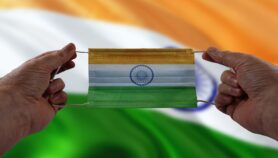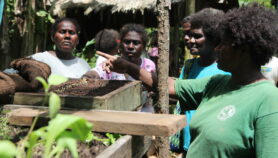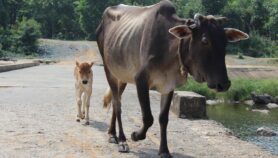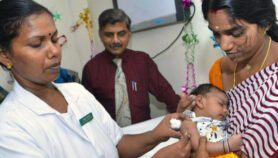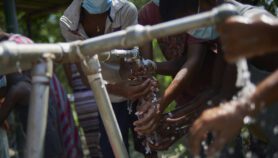03/09/20
COVID-19 cases spike in India as economy falters
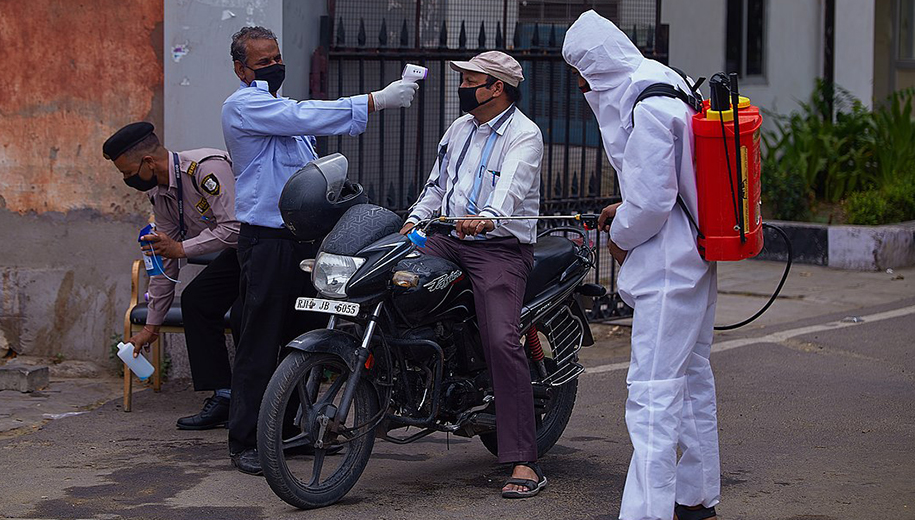
By: Ranjit Devraj
Send to a friend
The details you provide on this page will not be used to send unsolicited email, and will not be sold to a 3rd party. See privacy policy.
[NEW DELHI] A spike in COVID-19 infections in India, reaching an average of more than 70,000 cases per day over the past week, has raised questions about reopening the economy, which contracted by 24 per cent of GDP as a result of a drastic national lockdown imposed in March to stop the virus from spreading.
India has the third highest total COVID-19 caseload after the US and Brazil but has the highest confirmed daily cases for over a week including a new record high of 79,457 on Sunday. A single-day spike of 78,357 cases on 1st September has pushed the total number of cases in India to 3,769,523, according to Health Ministry data, with the death count standing at 66,333. However, the numbers are expected to further rise as the economy is being gradually reopened to allow businesses and supply chains to revive and restore lost jobs.
“If the current trend continues, India will overtake Brazil and the US in the number of cases and deaths by mid-October”
Krishan Kumar Aggarwal, Confederation of Medical Associations of Asia and Oceania
According to Krishan Kumar Aggarwal, president of the Confederation of Medical Associations of Asia and Oceania, a point has been reached where government efforts can no longer prevent the case numbers from rising. "If the current trend continues, India will overtake Brazil and the US in the number of cases and deaths by mid-October.”
"Opening up the economy will almost certainly lead to a surge in cases but the lockdowns have had the effect of training people to protect themselves. What now remains is for the government to concentrate on reducing mortality by providing timely medical care,” Aggarwal tells SciDev.Net.
Samiran Panda, who heads the Department of Epidemiology and Communicable Diseases at the Indian Council of Medical Research (ICMR), attributes the rise in the number of cases to improved testing. He also says it is largely confined to some states where there is an “intermixing of the susceptible populations with people who are asymptomatic or mildly symptomatic cases. There is also some complacency among people in following COVID-19 appropriate behaviour”.
The western state of Maharashtra has been hit the hardest by the pandemic, with 808,306 cases, including 24,903 deaths. Maharashtra is followed by the three southern states of Andhra Pradesh, Tamil Nadu and Karnataka.

Face shields are manufactured in Maharashtra, which was hit hardest by the COVID-19 pandemic. Image credit: Pooja Jadhav (CC BY-SA 4.0).
India’s minister for health, Harsh Vardhan, says he does not see respite in the rising number of cases before Deepavali, India’s biggest festival falling on 14 November, after which it would begin to decline. “COVID-19 will significantly come under control by Deepavali this year,” Vardhan, a medical doctor, said in a statement.
Already the pandemic has taken a toll on the economy. On Monday, the Ministry of Statistics and Programme Implementation published data showing that India’s Gross Domestic Product growth rate had contracted by 23.9 per cent for the April to June quarter — a period that corresponds roughly to a complete national lockdown from 24 March to 17 May.
This is the first instance of negative growth in GDP rates since 1996, when the country began publishing quarterly GDP data. It is also the steepest fall in economic growth among the world’s major economies.
On Tuesday, India’s chief economic advisor, Krishnamurthy Subramaniam acknowledged that it may be months before the economy revives fully, but the government would continue providing support packages. “We do recognise that the fight against COVID-19 may not just be for a few months, and therefore we are actually coming up with calibrated response and will continue to do so.”
The government has begun implementing cash transfer schemes worth US$266 billion for the poor that was announced in May. But economists had criticised that package as insufficient to stimulate growth and that any benefits would only be short-term and temporary.
India will need to spend more on public health to be able to deal with the rising number of COVID-19 cases. According to WHO, in 2016, India spent US$63 per person on health care for its 1.3 billion people. In comparison, China spent US$398 for each of its 1.4 billion people in the same year.
Health minister Harsh Vardhan acknowledges that India’s GDP expenditure on healthcare is lower than in many other countries. “Yet we have been able to keep the number of COVID-19 deaths low by putting in place the world’s biggest, severest lockdown on 25th March.”
This piece was produced by SciDev.Net’s Asia & Pacific desk.




